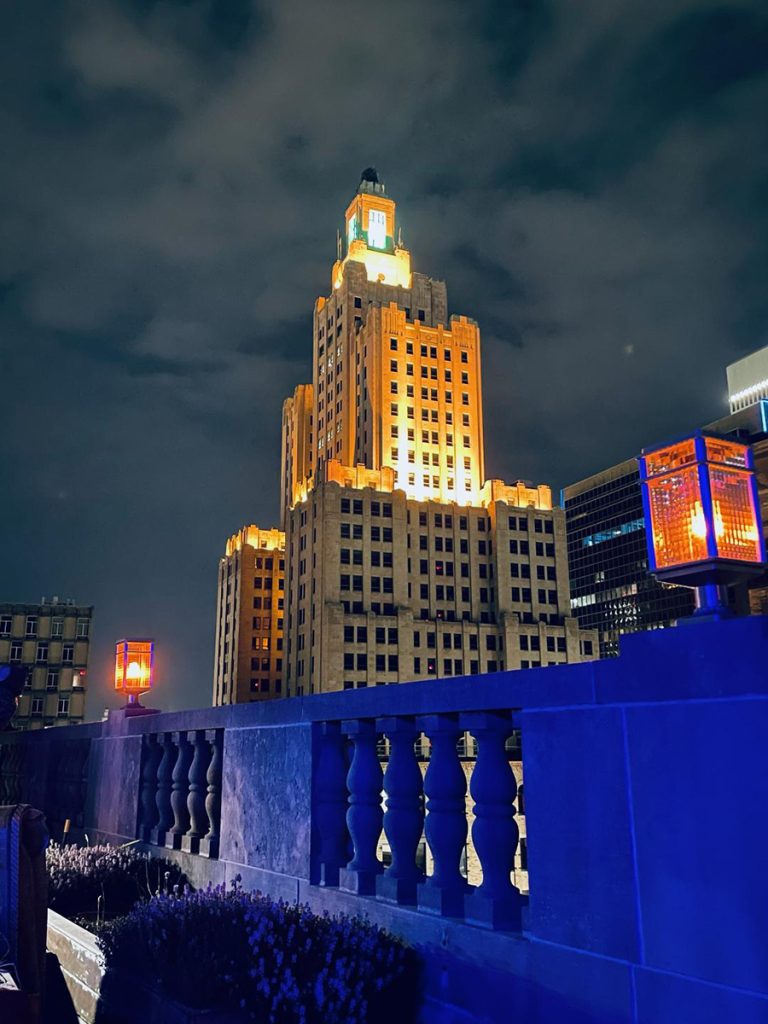
Before earning the moniker the “Creative Capital” (or even “PVD” for that matter), Providence struggled to rebrand itself as the Renaissance City through the 1990’s. Prior to this, there was little to no nightlife to speak of Downtown. Some of us reading this are old enough, and Rhody enough, to remember those days. Once 5pm hit and the corporate crowd shuffled off, the blocks turned into something like a ghost town – eerie and sometimes desolate. Washington, Weybosset, Westminster, all became a dark web. Any article mentioning PVD nightlife, its present or future, would be remiss to not acknowledge this transformation.
Let’s admit that, despite a current artsy enclave, PVD’s past is thoroughly blue-collar, based in manufacturing. This was reflected in our architecture, working-class neighborhoods, and general attitude of humility. Dive bars, greasy spoon diners, and a nightclub or two were the extent of after-hours entertainment. Then came mayor Vincent “Buddy” Cianci and his vision for a redesigned tourist mecca, complete with live theater, fine dining, and high-end condos. Love him or hate him, Cianci was an integral component to the city’s facelift; as long as we were willing to look past the backroom deals and widespread corruption. It was his obsessive infatuation with PVD that literally shifted rivers and fueled major development projects like the Providence Place Mall and Waterplace Park. Every time I attend WaterFire, I can’t help but reflect on this conflicted man’s legacy.
Fast forward thirty years and a new Mayor is poised at the podium to reiterate just how vital the nighttime economy is to PVD. Recently, City Hall released its sixty-page report entitled “Life at Night in the Creative Capital” to “better suit the needs of Providence’s Life at Night economy and industries.” Before moving forward, let’s broaden our understanding of the phrase “Life at Night”. It’s easy to link the term “nightlife” with the concept of lounges, bars, and restaurants. But, for this article we will avoid the word and acknowledge a plethora of other nighttime activities that keep this city running: but more on that later.
For now, let’s focus on some of the major points presented in the report and how it all impacts life in PVD. It’s not a secret to anyone that life grinds on beyond the 9am – 5pm, whether in work or recreation. The report found that 632 Providence businesses account for approximately 9,900 jobs in the nighttime sector. This translates to $352 million in annual labor income and $990 million in annual revenue to the local economy, or 3.3% of the city’s overall economic output.
What does this all mean? For starters, whenever a patron spends money at one of these establishments, this revenue “directly supports business operations, supports the wages of its employees, and generates city tax revenues.” In turn, “household spending of income earned by nightlife industry workers supports additional business activity and job creation.” This all culminates in nearly $1 billion as “the collective annual direct, indirect, and induced effects of the Life at Night economy.” Let’s explore some of the collateral benefits that this second economy provides. Many of us reading this will have surely worked at some point, or still work, in the fringes of the night time economy. We can speak to the potential for career development and transferable skills.
In addition, this type of industry tends to attract more entrepreneurial spirits, as it takes a certain vision and daring to gamble on another night spot in a competitive market. These bold thinkers are the ones that form the backbone of our local economy and small businesses. It’s also worth mentioning how supportive these workers are of each other. The server community alone is a tightknit and wide-ranging one. This is an industry primed for networking, rubbing shoulders, and “cross-pollination” into other peripheral fields. This type of work also allows for a flexible schedule and lifestyle. College students, single parents, and overall insomniacs flourish here. Take my word for it; I’ve been all three at some point when working nights.
Even with all of these benefits, the industry still faces its hurdles. COVID dismantled this under-the-radar economy, and it still hasn’t fully recovered. Even now, “47% of nightlife businesses report that current revenue levels remain below pre-pandemic levels.” Inflation and rising costs are a formidable challenge, particularly as the threat of tariffs rears its head. Access to capital can hinder some humble dreamers, especially among some of our marginalized communities looking to open a business. Some argue that public transportation, parking, and overall safety in the downtown area are not strong enough to sustain a long-term vision for PVD life at night.
So, what does the report conclude as solutions and general goals? In a nutshell, there’s talk of creating and appointing a “Nighttime Manager” position, meant to “serve as a liaison between nightlife businesses, employees, residents, and city agencies.” There are noise mitigation solutions proposed, as well as improved lighting downtown. There’s also a plan to “empower businesses and event organizers to develop unique programming that elevates the cultural vibrancy of the city.” This might include creating a permitting system that’s more comprehensible than the current tour of city departments needed to get clearance for an event.
There’s a lot to digest in the preceding, but I want to conclude with a an expression of gratitude for some of those thankless roles, camouflaged in the mosaic of our after-dark excursions. Let’s take a moment to appreciate our first responders and medical workers, our gas station attendants, and security guards. Let’s thank our rideshare drivers and food delivery folks. It takes a lot to keep a city running and every gear is just as important as the next; all are vital, otherwise society just stands still. Now get out there and enjoy a night out! •

